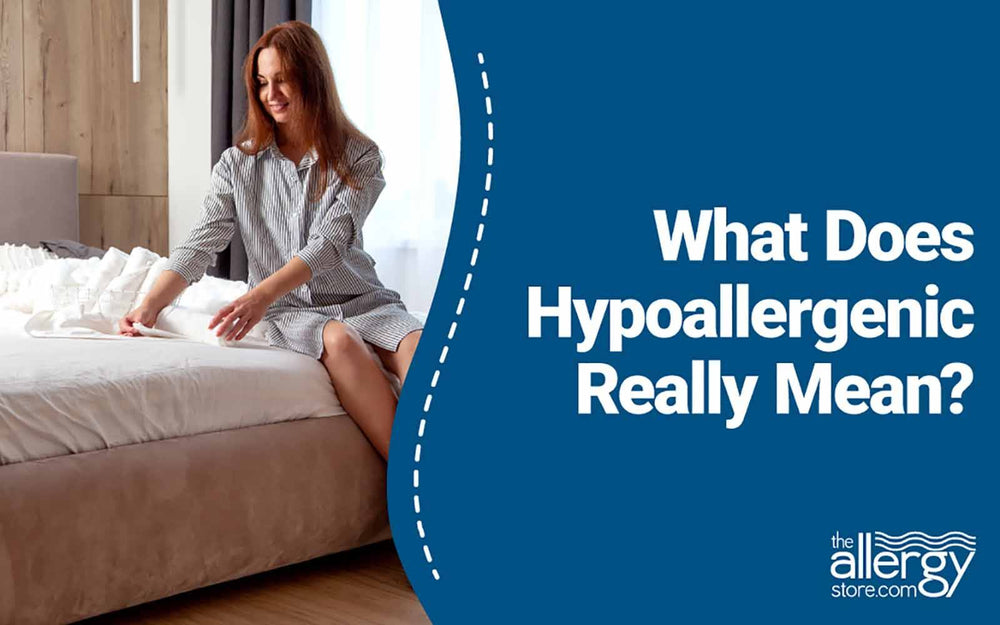
Hypoallergenic is a term you see used to describe everything from skincare cream to laundry detergent and even cats and dogs. If it’s hypoallergenic it’s got to be good, right?
How well do you know what the term means?
Try this quiz.
1. Poodles and bichon frise are hypoallergic breeds of dogs.
a) True
b) False
2. There are 2 hypoallergenic brands of peanut butter on the market.
a) True
b) False
3. Hypoallergenic vacuum cleaners remove more dust particles than other types of vacuum cleaners.
a) True
b) False
4. Hypoallergenic laundry detergents remove all allergens while you wash your clothes.
a) True
b) False
How do you think you did? If you answered True to one or more questions, you don’t understand the term hypoallergenic and can be easily misled by some marketing claims.
Hypoallergenic Defined
Hypoallergenic means that the ingredients/materials used to make/manufacture the product did not cause an allergic reaction in the subjects upon which they were tested. That doesn’t necessarily mean it is allergy-proof.
In fact, there are no Federal standards or definitions that govern the use of the term "hypoallergenic." The term means whatever a particular company wants it to mean. The company doesn’t have to do tests to prove it won’t cause a reaction.
Let’s break that down.
Food. In order to test if something is hypoallergenic, you have to test the elements against a subject. All elements are hypoallergenic if you aren’t allergic to the proteins in the element.
For example, look at question 2 about peanut butter. If you aren’t allergic to peanuts or salt, all brands of peanut butter are hypoallergenic. If you are allergic to the proteins in peanuts, there is no brand of peanut butter that is hypoallergenic.
Cleaning Products. In the case of hypoallergenic laundry detergent, the term doesn’t mean that it removes allergens. It means that the common ingredients that cause allergic reactions (fragrance and dye) have been removed. However, most allergic reactions to detergent are caused by the enzymes used to break down soil.
If the detergent has no dye or fragrance and still has enzymes it can cause allergic reactions. It is not hypoallergenic to those sensitive to enzymes and will not remove allergens from your laundry.
The hypoallergenic vacuum cleaner is the most egregious use of the term. Rarely do the materials used to manufacture a vacuum cleaner cause an allergic reaction. But, the use of the term tricks you into thinking that the vacuum cleaner does more than it really can.
Unless you are allergic to the plastics and metals used to make vacuum cleaners, all machines are hypoallergenic. That doesn’t mean they do a good job of removing fine particles. The best allergy vacuums are sealed-canister units that use self-sealing bags and HEPA filters.
Pets. We love this one. If someone tells you a cat or dog is hypoallergenic they are not telling you the truth. If the animal creates urine or saliva it produces the allergy-causing protein.
The question about dogs is based on the misconception that dogs that don’t shed don’t create allergens. The protein that causes allergic reactions to dogs comes from the saliva and urine of the animal. That protein gets spread to the skin and fur of the dog. So, an animal that sheds less spreads less allergen but the animal still produces the allergy-causing protein.
Know Your Ingredients and Read Labels
So, if certain laundry detergents, cleaning products, or personal care products cause you to have allergic reactions you must understand what is causing the reaction. In the case of cleaning products, it is generally enzymes, dyes, and fragrances. Some “green” products are soy-based, so they should be avoided if you are highly sensitive to soy.
Personal care items not only have dyes and fragrances to make them look and smell good, but they can also have masking fragrances used to conceal the odor of other ingredients. They also include formaldehyde and formaldehyde releasers. These can cause allergic reactions as well as other health hazards.
Learn to read the labels. Whether it is a bottle of shampoo or deodorant or a bottle of all-purpose spray cleaner, read the label. Even if the label says hypoallergenic on the front, read the label on the back for enzymes, fragrances, masking fragrances, dyes, formaldehyde and formaldehyde releasers (such as quertinum-15).
If you have food allergies, read the labels of all packaged, prepared, and precooked foods. If someone tells you a product is considered “hypoallergenic” ask them why.
The More You Know
Bottom Line - It's impossible to guarantee that a product will never cause an allergic reaction. The more you know about the term hypoallergenic and how it is misused, the smarter you will be with your purchases.
Allergy elimination is about eliminating the allergy-causing substance in your home the best you can. Once you do this, you may be able to eliminate the need for all the medications and doctor visits. For additional information please click here to download your free copy of" You Can Do It! Allergy Free Living.

